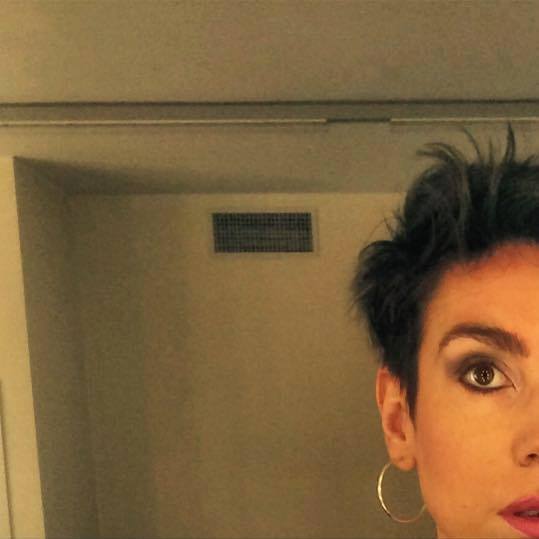La Pace Preventiva (Preventive Peace) is the title of the exhibition that pays homage to Michelangelo Pistoletto in Milan. Palazzo Reale offers us an evocative and mystical journey that does not want to be simply an art exhibition but takes on a profound meaning that invites us to reflect on this delicate historical moment in which war is the protagonist. A war that kills, exterminates and destroys love and cultural and racial difference.

Michelangelo Pistoletto davanti all’opera La Mela reintegrata, Palazzo Reale Milano, Sala delle Cariatidi, ph. Federico Gualandi, courtesy Palazzo Reale Milano
Michelangelo Pistoletto (Biella 1933) is one of the protagonists of Italian Arte Povera. He is an artist who represents the beauty of contrast, one who teaches us to look beyond the materiality of things. The duality of being and non-being, materiality and spirituality, the weight and lightness of things that meet, giving life to something possible and not just imaginable. His story begins in the mid-sixties when the subjects of the “mirror paintings” were cut and immobilized in a snapshot, in an even more accentuated atmosphere of suspension. At the beginning he was seen as a pop artist but he has always lacked the identification between art and consumer objects and goods, which is found in American Pop Art.

Michelangelo Pistoletto, La Pace Preventiva, installation view at Palazzo Reale Milano, Sala delle Cariatidi, ph. Glaz Gutman, courtesy Palazzo Reale Milano
This is how Plexiglas came out, i.e. transparent resin slabs on which the artist paints or takes photographs of objects already used in his early works, which allow a glimpse of the surface on which they rest. The light meets the emptiness of the work and the fullness of reality, of the environment. The distinction between image and reality becomes ambiguous, the objects represented are transformed into real objects, which relate to the passage of time and the changing of things. «The works I make […] are objects through which I free myself of something – they are not constructions but liberations – I don’t consider them more objects but less objects, in the sense that they bring with them a definitively perceptual experience externalised», he says. But what exactly does less objects mean? The Oggetti in meno break the dogma that requires the work of an artist to be stylistically recognizable as a standardized commercial brand. They were initially received coldly by critics. If we wanted to interpret them now, these objects represent the intention to go against the excess in which we live. Ours is the age of too much of everything and “getting rid of” the ephemeral represents a form of freedom.

Michelangelo Pistoletto, La Pace Preventiva, installation view at Palazzo Reale Milano, Sala delle Cariatidi, ph. Glaz Gutman, courtesy Palazzo Reale Milano
So here we are at the deepest meaning of this exhibition which carries a message of peace. The room of the Caryatids, so rich and sumptuous, becomes the place where “poor” objects are conserved. These works are built with primordial materials and accessible to all that appear to us only through the labyrinth at the center of the exhibition. We can feel disoriented and more or less involved in this journey, which will inevitably lead us to reflect on the meaning of peace. La pace preventiva echoes our path which means, in its universal meaning of the preventive term, aimed at preventing the occurrence or diffusion of unwanted events. Let’s prevent peace, let’s avoid something happening first through everything that is necessary and possible to avoid a possible disaster. Only through this awareness we can truly aspire to change.

Michelangelo Pistoletto, La Pace Preventiva, installation view at Palazzo Reale Milano, Sala delle Cariatidi, ph. Glaz Gutman, courtesy Palazzo Reale Milano
The video with which the exhibition opens is a screen in which Picasso’s work, the dove of peace, does not carry with it a simple green branch but the symbol of infinity which in Pistoletto represents the Third Paradise, the third phase of humanity, which is achieved in the balanced connection between artifice and nature. Only through a possible encounter between what man has created and what exists in nature it is possible to find the necessary balance for the state of peace and acceptance that this world needs. Let’s say no to war, yes to diversity!
Info:
Michelangelo Pistoletto. La Pace Preventiva
23/03/2023 – 04/06/2023
Palazzo Reale
Piazza del Duomo, 12 – Milano
www.palazzorealemilano.it

Born in 1987. Freelance publisher, passionate about contemporary art and the interaction between visual arts. She graduated from DAMS in Bologna in 2013 with a thesis on the relationship between Futurism and Fashion. She is always looking for emerging artists and discovering subcultures. She collaborated for several years with D’Ars Magazine (now archive) and currently collaborates with ViralWave as art manager and with Juliet Art Magazine.






NO COMMENT